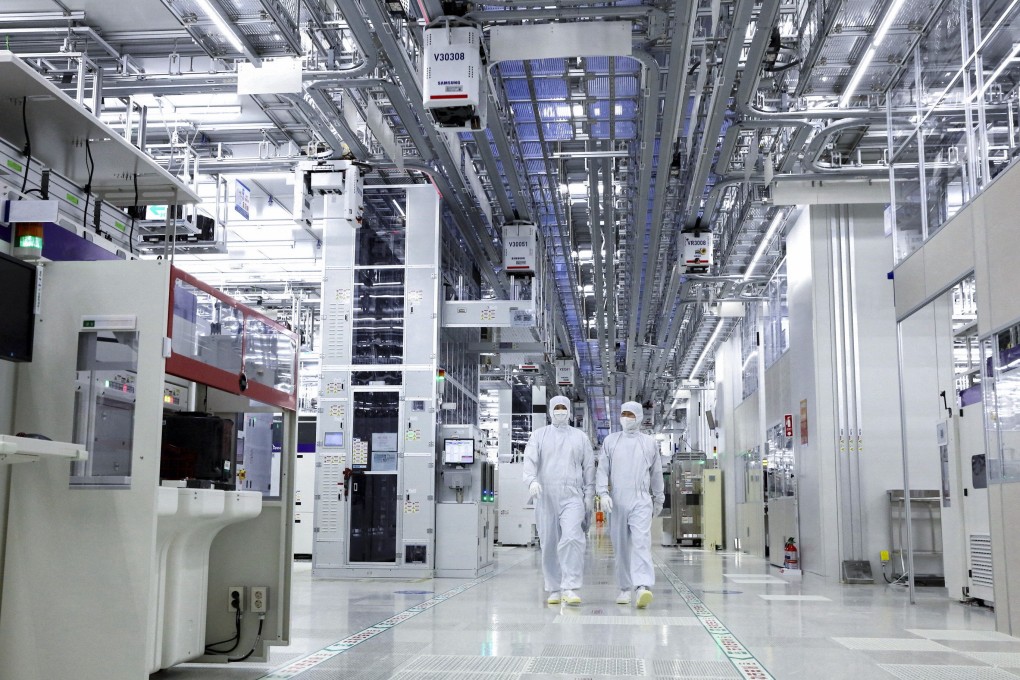Tech war: US chip restrictions could cost 0.6 per cent of China’s GDP and weigh on yuan, according to Barclays report
- Barclays says while costs are ‘manageable for now’, impact could worsen if US restrictions are widened
- In a worst-case scenario, the economic costs for China could widen to 3 per cent of GDP and a 7 per cent hit to yuan against US dollar

US restrictions on China’s semiconductor industry could cost up to 0.6 per cent of China’s gross domestic output and weigh on the yuan’s value against the dollar by 3 per cent if escalated further, according to a research note by Barclays.
While the impact is “manageable” for now, US controls on semiconductor exports to China could have a substantial effect on the country’s output and currency if the restrictions are widened to “lower-end semiconductors” or involve supplies from other countries, Barclays economists including Jian Chang, Yingke Zhou and Rahul Bajoria wrote in a note published on Wednesday.
In a worst-case scenario, the economic costs for China could widen to 3 per cent of GDP and a 7 per cent hit to the value of the Chinese currency against the dollar, according to Barclays estimates.
“Controls on US semiconductor exports to China are part of a broader strategic agenda that, although manageable for now, could have substantial effects on China’s output and currency if escalated further,” according to the research note.
Citing concerns that hi-tech items could strengthen China’s military, the Bureau of Industry and Security, under the US Commerce Department, unveiled on October 7 a raft of updates to its existing hi-tech export control rules. The new rules further restrict China’s access to off-the-shelf high-end logic and memory semiconductors above certain technical thresholds, and the equipment to make them domestically.
The Post previously reported that the latest restrictions are the most extensive in years, with many analysts saying that they could spell the end for high-end semiconductor fabrication in China if the country cannot find replacements for US-origin technology.
The Barclays report states that the latest restrictions can be seen “as part of a broad set of strategic objectives aimed at maintaining the status quo in Taiwan, reducing US dependence on China in key sectors, and making China’s tech position in the world less asymmetric”.